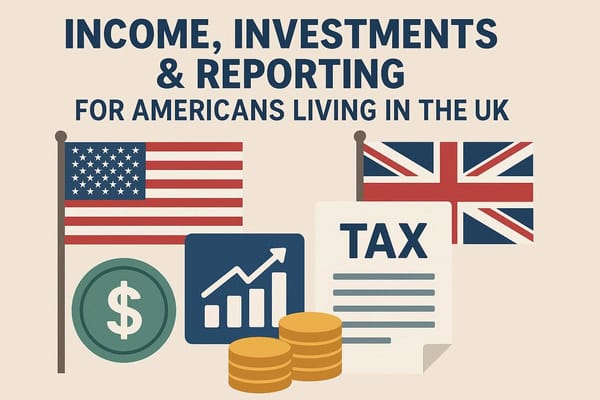Hold On for Dear Life: When Will I Have Enough Bitcoin to Retire?
This week Bitcoin has once again shattered expectations by reaching new all-time highs and closing in on the $120,000 mark. This milestone has sparked the age-old debate: is now the time to take profits, or is it "peak tulip mania"? Many investors are tempted to sell, fearing a repeat of past cycles where prices crashed after peaks. However, the fundamentals of Bitcoin suggest that HODLing (holding on for dear life) is not only rational but more compelling than ever. In this extended blog post, I'll explain why Bitcoin is far from a bubble, why long-term holding remains a powerful strategy, and how you can go "all in" on Bitcoin while still managing to live comfortably – by borrowing against your BTC at a conservative 20% loan-to-value (LTV) ratio to cover expenses, especially during bear markets. At the end, I'll include a simulation calculator to illustrate this strategy in action.
Why Bitcoin Is Not Tulip Mania: The Case for Continued Upside
The comparison to tulip mania – the 17th-century Dutch bubble where bulb prices skyrocketed before collapsing – is a common critique of Bitcoin. But this analogy falls apart upon closer examination. Tulips had no intrinsic value beyond aesthetics, no utility, and unlimited supply. Bitcoin, on the other hand, is a technological innovation with real-world use cases, a fixed supply, and growing adoption. Here's why HODLing makes sense even at current highs:
- Fixed Supply and Halving Cycles: Bitcoin's supply is capped at 21 million coins, with issuance halving every four years. The most recent halving in 2024 reduced the daily new supply from 900 BTC to 450 BTC, creating a supply shock amid rising demand. Historical data shows that post-halving bull markets often last 12-18 months, and we're still in the early stages of this cycle. Even at ATH, the reduced supply supports higher prices as demand grows.
- Institutional and Sovereign Adoption: Unlike the early days, Bitcoin is now embraced by mainstream finance. Spot Bitcoin ETFs, approved in 2024, have attracted billions in inflows from institutions like BlackRock and Fidelity. Companies such as Strategy and Tesla have added BTC to their balance sheets, treating it as a treasury asset. A new wave of "BTC treasury" companies has started following the lead of Strategy and is aggressively buying BTC while leveraging the financial markets. Lastly, countries like El Salvador have made Bitcoin legal tender, and rumours of other nations (including some in the Middle East) exploring BTC reserves suggest global adoption is accelerating. This institutional demand is a new dynamic that wasn't present in previous cycles, reducing volatility and supporting long-term value.
- Macroeconomic Tailwinds: In a world of persistent inflation, currency devaluation, and geopolitical instability, Bitcoin serves as digital gold – a store of value that's borderless, censorship-resistant, and deflationary. With global debt levels at record highs and central banks printing money, BTC's average annual return of over 200% since inception outperforms traditional assets like stocks (S&P 500 ~10% CAGR) or gold (~5% CAGR). Even if growth slows to 20-30% annually as the asset matures, that's still superior to most investments.
- Network Effect and Utility: Bitcoin isn't just speculative; it's a network with real utility. The Lightning Network enables fast, cheap transactions, making it viable for payments. It's also the base layer for many other L2 networks being currently developed. As more people and businesses use Bitcoin, its value compounds through Metcalfe's Law (network value grows with the square of users). Tulip bulbs couldn't power remittance, hedge against hyperinflation, or secure multi-billion-dollar transactions – Bitcoin can and does.
- Historical Precedent: Every time Bitcoin has hit ATH, skeptics have called the top, yet it has always recovered to new highs. From the 2017 peak of $20,000 (followed by an 84% crash) to the 2021 peak of $69,000, BTC has delivered 5-10x gains in subsequent cycles. The 2025 ATH is likely part of a larger supercycle driven by the factors above. Selling now could mean missing out on the next leg up, potentially to $200,000 or higher by 2026.
In short, Bitcoin is not a bubble but an asset in its monetization phase, transitioning from niche to global reserve. HODLing aligns with its asymmetric upside: the downside is limited (it can't go to zero with current adoption), while the upside is uncapped. But HODLing doesn't mean you can't access liquidity – that's where the borrowing strategy comes in.
The HODL Strategy: Go All In Without Selling
Going "all in" on Bitcoin means allocating a significant portion of your portfolio to BTC and holding through volatility. But life requires cash for expenses, especially during bear markets when selling would lock in losses and trigger taxes. The solution? Borrow against your BTC collateral but at a low enough LTV to prevent being liquidated in the event of another bear market.
How the Borrowing Strategy Works
- The Basics
Use platforms like Aave (DeFi) or centralized lenders like Ledn to deposit BTC as collateral and borrow USD or stablecoins. LTV is the loan amount divided by the collateral value. At 20% LTV, you're borrowing $20 for every $100 of BTC, leaving a large buffer for price drops. - What LTV?
It's impossible to predict the future but historically the BTC price can experience serious drops. Big drops however have always followed oversized gains, the like of we probably won't see again (early years saw gains as high as 13,000%). So a conservative LTV ratio of 20% would protect against liquidation during bear markets. Most platforms liquidate at 50-70% LTV, so starting at 20% allows for a 70% price drop before risk (e.g., if BTC drops 70%, LTV rises to ~67%). It's safety first – the goal is to survive volatility without selling. - Funding Lifestyle
Borrow for daily expenses, capitalizing interest (adding it to the loan) if possible. As BTC appreciates, your collateral value rises, lowering LTV and allowing more borrowing. In bear markets, avoid new borrows if LTV rises, and use savings or reduce expenses. The key is never selling the principal BTC, letting it compound. - Advantages Over Selling
- Tax Efficiency: Borrowing isn't a taxable event, unlike selling BTC (which triggers capital gains taxes up to 24% in the UK and 37% in the US).
- Compound Growth: Keeping BTC intact allows you to benefit from future price appreciation. If BTC grows at 21% CAGR, your collateral outpaces the 8% borrowing rate. Keep in mind that for the last five years Bitcoin has grown at 65% annualy as a comparison.
- Bear Market Survival: Low LTV gives buffer; you can wait for recovery without forced sales.
- Risks and Mitigation
- Liquidation: Mitigated by low LTV and monitoring.
- Interest Costs: At 8%, it's manageable if BTC growth exceeds it.
- Platform Risk: Use reputable lenders; for DeFi, understand smart contract risks.
This strategy lets you go all in on BTC (your assets in BTC) while living properly by tapping equity without selling. It's like a reverse mortgage for your Bitcoin – extract value as it grows.
When to retire? A BTC Simulation Calculator
As you can imagine there are many moving parts to this strategy. The calculator below helps you understand how much bitcoin you need to retire depending on how much or how little risk to want to take. You can even simulate a bear market and see if your setup would allow you to survive a market crash.
It's, as with everything, a question of balance: too much leverage and you will be liquidated in a crash, too little and you won't have enough money to retire. Don't hesitate to play with the different variables of the model to adapt it to your specific situation and risk appetite.
| Year | BTC Price (£) | Borrowed (£) | Loan Balance (£) | Interest Cap. (£) | BTC Remaining | Net Worth (£) |
|---|
Don't hesitate to play with variables to stress test your personal scenario. For example:
1. Ultra-Long Retirement Horizon
- Change: Extend simulation length to 40–50 years
- Purpose: Assess sustainability for early retirement or inheritance planning
2. Closer Bear Market
- Change: Change date and severity of bear market
- Purpose: Test resilience against bear markets, as closer bear markets obviously have a greater impact
3. Rising Living Costs
- Change: Increase inflation to 7% and annual expenses to £80K
- Purpose: Examine impact of lifestyle creep and macro pressures
4. Aggressive Borrower Scenario
- Change: Raise LTV to 30% starting in year 1
- Purpose: Compare upside potential vs. liquidation risk during downturns
5. Flat or Declining BTC Performance
- Change: Set BTC CAGR to 10%
- Purpose: Stress test low-growth conditions on your lifestyle
6. Retire Late but Fast
- Change: Initial holding 15 BTC, short simulation length (10–12 years)
- Purpose: Explore options for late adopters with larger stacks
As you can see, even with a modest stash, and with conservative growth assumptions it's possible to live for ever on your Bitcoin stash with the right approach. Bitcoin's fundamentals make HODLing a smart long-term play, and borrowing at 20% LTV or less lets you enjoy life without sacrificing your stack. This strategy embodies the Bitcoin ethos: be your own bank, hold the keys, and let time work for you. If you're at ATH, remember – the real mania is missing the next wave. HODL on!



